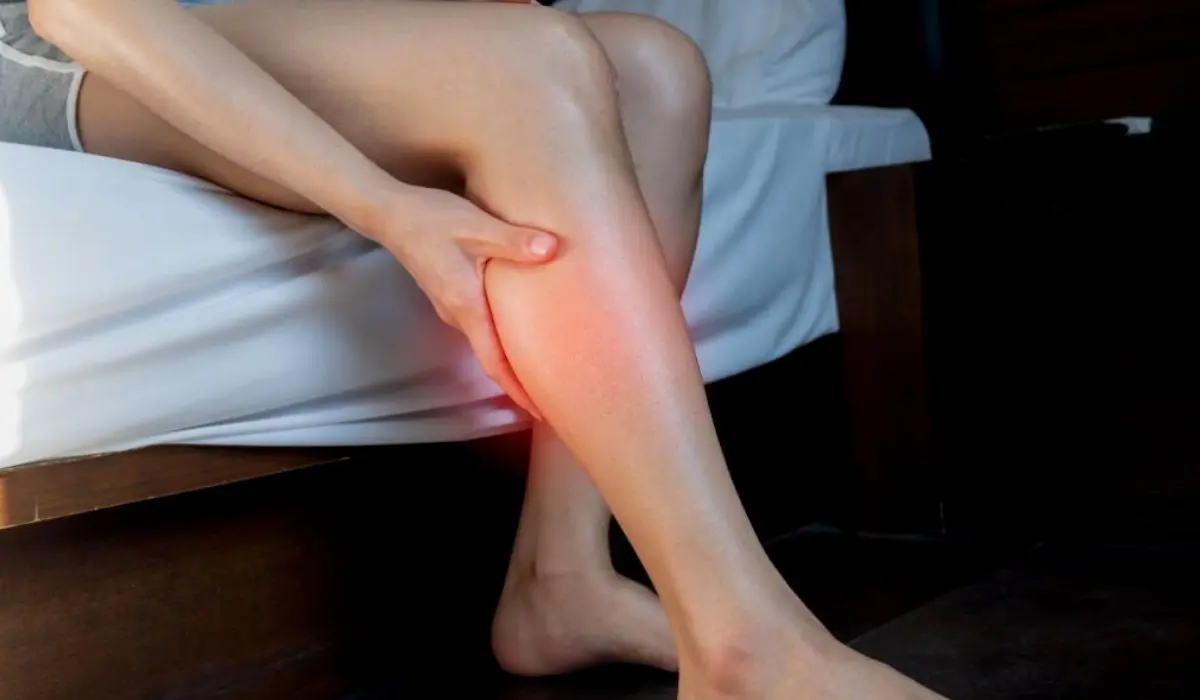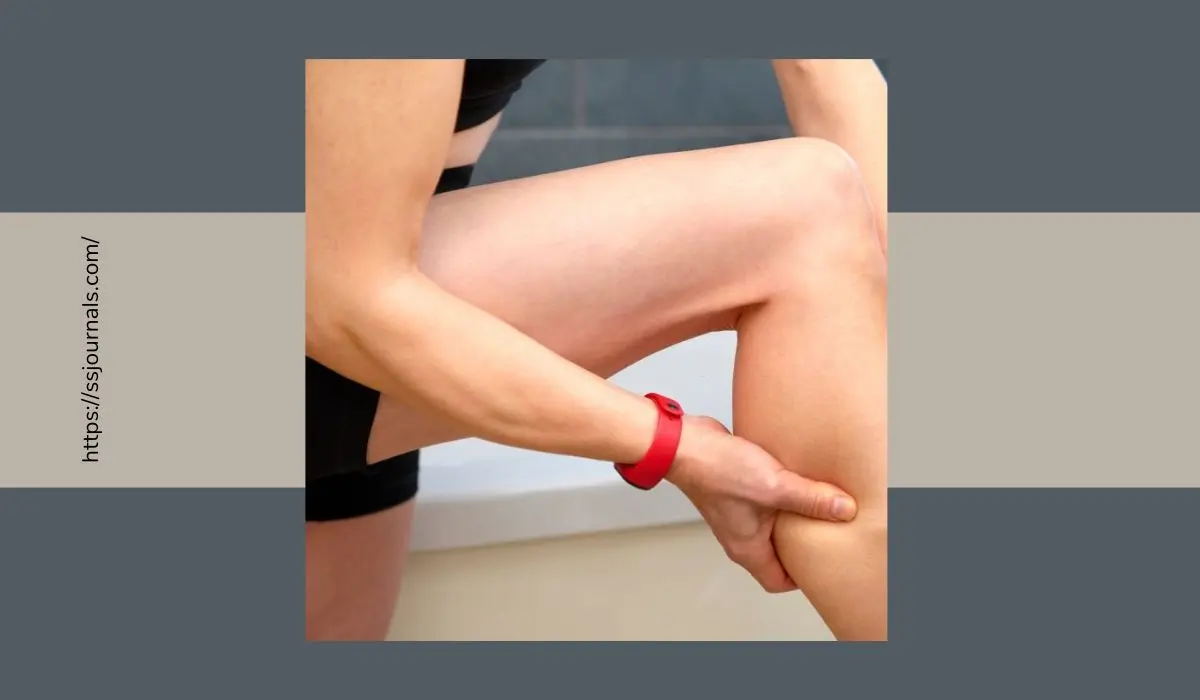The peroneal nerve is a branch of the sciatic nerve that runs along the outer part of the lower leg and controls movement and sensation in the lower leg, foot, and toes.
Peroneal nerve injury or damage, also called peroneal neuropathy, can cause pain, numbness, tingling, and muscle weakness in the lower leg, ankle, and foot.
What Do You Mean By Peroneal Nerve Injury? How It Is Caused?
The peroneal nerve is susceptible to injury because it is located close to the surface of the skin and wraps around the fibula bone near the knee.
Damage to the peroneal nerve disrupts signals between the nerve and the muscles it activates, leading to foot drop or difficulty lifting the foot at the ankle.

There are several potential causes of peroneal nerve injury:
🔶 Trauma or injury to the knee or leg – Fractures, dislocations, lacerations, or blunt trauma can stretch or compress the peroneal nerve. Sports injuries like ankle sprains are a common cause.
🔶 Prolonged pressure on the knee – Crossing the legs for long periods or wearing a leg cast after an injury can damage the peroneal nerve.
🔶 Direct compression of the nerve – Sitting with the legs awkwardly crossed at the knee for prolonged periods can pinch the nerve.
🔶 Leg swelling – Swelling from pregnancy, diabetes, blood clots, or other conditions can put pressure on the peroneal nerve.
🔶 Growths or tumors – Noncancerous masses like ganglion cysts or lipomas can grow in the knee area and compress the nerve.
🔶 Nerve entrapment – Scar tissue or fascia near the fibula head can entrap the nerve.
🔶 Neuropathic disorders – Diabetes, arthritis, Guillain-Barre syndrome or other conditions that cause peripheral neuropathy can affect the peroneal nerve.
🔶 Lack of blood flow – Poor circulation from peripheral artery disease can damage nerves in the lower limbs.
🔶 Toxic exposures – Lead poisoning and some chemotherapy drugs are toxic to nerves.
In many cases, the exact cause of peroneal nerve damage is unknown. Sometimes prolonged pressure on the knee from habits like leg crossing can worsen existing minor nerve damage. Seeking prompt treatment for peroneal nerve injury is key to maximizing the chances of regaining strength and function.
Symptoms Of Peroneal Nerve Injury
🔶 Foot drop – Dragging the foot or ankle when walking, tripping frequently
🔶 Weak ankle and toe dorsiflexion – Difficulty lifting the foot and toes upward
🔶 Numbness over the top of the foot and outer lower leg
🔶Tingling or pins and needles sensation
🔶 Sharp, shooting pain that radiates down from the knee to the ankle
🔶 Muscle weakness in the anterior compartment of the lower leg
🔶 Muscle cramping and spasms in the calf, ankle, or foot
🔶 Clumsiness and reduced coordination of the lower leg and foot
🔶 Difficulty walking normally – Change to a steppage gait to avoid tripping
🔶 Loss of sensation – Numbness over the top and outer side of the foot
🔶 Atrophy – Thinning and reduced bulk of the muscles in the anterior lower leg
The symptoms are usually limited to one leg and affect the side of the injury. They tend to come on gradually over weeks to months as nerve damage progresses. Prompt diagnosis and management are key to maximizing the potential for nerve recovery.
Risk Factors For Peroneal Nerve Injury
Certain factors can increase a person’s risk of developing a peroneal nerve injury:
🔶 Anatomic factors – A shallow fibular head that the nerve wraps around tightly can predispose it to compression. High arches and varus knee alignments also increase risk.
🔶 Obesity – Excess weight increases pressure on the peroneal nerve at the fibula head.
🔶 Diabetes – High blood sugar levels can damage peripheral nerves. Diabetic neuropathy increases susceptibility to peroneal neuropathy.
🔶 Alcoholism – Chronic alcohol use is toxic to nerves.
🔶 Leg casting – Plaster casts after a fracture or injury put prolonged pressure on the peroneal nerve.
🔶 Sports injuries – Ankle sprains and knee trauma from sports like soccer, skiing, or basketball can damage the peroneal nerve.
🔶 Jobs requiring kneeling – Occupations with repetitive or prolonged kneeling like carpet laying increase risk.
🔶 Pregnancy – Some women develop peroneal neuropathy from fluid retention compressing the nerve.
🔶 Older age – Nerves become more susceptible to compression and disease with age.
🔶 Prior knee surgery – Surgeries like total knee replacement or tibia osteotomy put the peroneal nerve at risk.
🔶 Genetics – Some neuropathies have familial and genetic links.
Recognizing these risk factors can help identify patients who may need monitoring or preventative measures to avoid peroneal nerve injury.
How To Cure Peroneal Nerve Injury?
Treating peroneal nerve injury aims to relieve compression on the nerve, reduce inflammation, improve nerve function, and restore muscle strength. Common treatments include:
🔶 Medications – Non-steroidal anti-inflammatories (NSAIDs), neuropathic pain medications, muscle relaxants, and in some cases steroids or immunosuppressants.
🔶 Bracing – An ankle-foot orthosis (AFO) brace maintains the foot in a neutral position to prevent further damage. It stabilizes gait for walking.
🔶 Physical therapy – Stretching, strengthening exercises, and gait training help maintain range of motion and restore function. Electrical stimulation may improve nerve regeneration.
🔶 Orthotics – Custom shoe inserts support the arch and correct biomechanical abnormalities causing nerve compression.
🔶 Surgery – Surgery to decompress or transpose the nerve or address other anatomical factors relieves pressure on the nerve. This is considered if conservative treatment fails.
🔶 Lifestyle changes – Weight loss, proper leg positioning, avoiding constricting clothing, vitamin B supplementation, and alcohol abstinence protect the nerve.
🔶 Time – Mild injuries may heal with rest and conservative care over 6-12 months as long as further damage is avoided. Nerve regeneration is slow.
Recovery prospects depend on the severity and cause of injury. Quick intervention and protecting the nerve from further compression are key.
With proper treatment, some functions can often be restored, but severe injuries may result in permanent deficits.
Read More:- Is Protein Powder Good For You? What Science Says About It?
Precautions for Peroneal Nerve Injury
To prevent peroneal nerve damage or avoid aggravating an existing injury, these precautions can help:
🔶 Avoid leg crossing – Keep knees and ankles uncrossed when sitting to prevent prolonged compression.
🔶 Limit kneeling – Use knee pads and take frequent breaks when kneeling for occupations or activities.
🔶 Wear loose clothing – Avoid tight pants, knee-high boots, or socks with elastic bands.
🔶 Treat leg swelling – Elevate legs and treat causes of swelling to avoid nerve compression.
🔶 Use proper footwear – Choose shoes with arch support and avoid high heels that can compress nerves.
🔶 Stretch before exercise – Warm up and stretch the lower legs and ankles to prevent sports-related nerve injury.
🔶 Treat falls promptly – Immobilize the knee and evaluate any leg injuries that could damage the peroneal nerve.
🔶 Maintain ideal weight – Carry less weight to put less pressure on the knees.
🔶 Correct posture and gait – Avoid varus knee alignment and high foot arches through braces, orthotics, or physical therapy.
🔶 Prevent diabetes and alcoholism – Manage blood sugar levels and avoid excessive alcohol intake.
🔶 Practicing nerve gliding exercises – Specific exercises can help improve nerve mobility.
🔶 Get frequent checkups – Monitor for nerve irritation, especially if at high risk.
Paying attention to symptoms and making lifestyle changes to protect the peroneal nerve can help prevent long-term damage from neuropathy. Prompt treatment enhances recovery prospects.
Conclusion
In summary, peroneal nerve injury is a common cause of foot drop and lower leg weakness. The nerve is vulnerable to compression and trauma, especially around the fibula bone near the knee. Controlling swelling, avoiding prolonged pressure, and promptly treating leg injuries can help prevent peroneal nerve damage.
Recovery depends on the severity and cause of injury but is often possible with medications, bracing, therapy, and surgery. Taking preventive precautions is key for those at high risk due to factors like diabetes, sports participation, or occupations requiring kneeling.
With proper treatment and lifestyle adjustments, the outlook for functional recovery from peroneal neuropathy can be good in many cases.
Read More:- What Causes Chronic Migraine And How To Treat It?
FAQs
Q: What causes peroneal nerve damage?
A: Common causes include trauma from ankle sprains or fractures, compression from habits like leg crossing, diabetic neuropathy, sports injuries, nerve entrapment, and pressure from casting or leg swelling. Prolonged pressure is often the precipitating cause.
Q: Where is the peroneal nerve located?
A: The peroneal nerve branches off the sciatic nerve and runs along the outer calf near the head of the fibula bone by the knee, then down the leg to the ankles and feet.
Q: What are the symptoms of a peroneal nerve injury?
A: Symptoms include foot drop, tripping when walking, numbness or tingling over the outer calf, difficulty lifting the ankle and toes, and weakness in the muscles that lift the foot. Foot drop is the most characteristic symptom.
Q: How is peroneal neuropathy diagnosed?
A: Diagnosis involves a physical exam to assess muscle weakness and sensation loss in a peroneal nerve distribution. Electromyography (EMG) studies help confirm nerve damage. MRI may identify compressive causes.
Q: How long does it take for a damaged peroneal nerve to heal?
A: Mild injuries may heal in 6-12 months with conservative treatment. More severe injuries causing muscle wasting may never fully recover. Maximum recovery potential is usually reached in 1-2 years. Early treatment is key.

